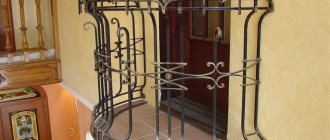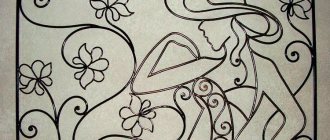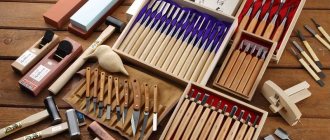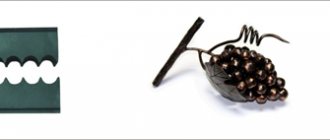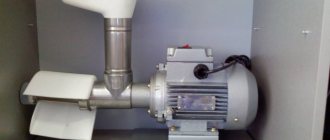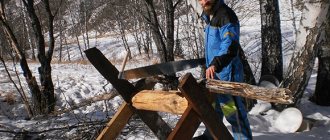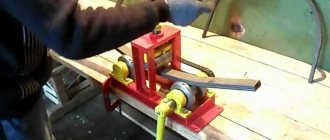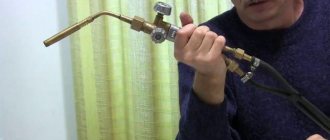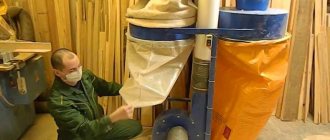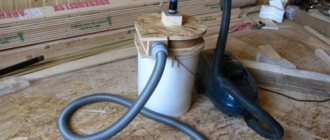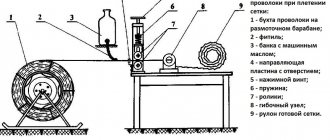The technology of manual metal processing goes back thousands of years. There are two main types. This is cold or hot forging. To process metal using the hot method, you need a forge or melting furnace and a properly prepared room. And the price for these devices is high.
Cold forging equipment can be placed in any suitable location, such as a home extension. If desired, some of the machines can be made independently. This circumstance significantly reduces the costs of organizing production. In addition, photos of the machines are easy to find on the Internet.
Cold forging machines: advantages of their use
The main advantage is that it is quite easy to make a cold forging machine with your own hands. And also, if necessary, you can do without electric drives.
In addition, working on such machines has the following advantages:
- fast learning;
- ease of operation;
- low labor costs;
- possibility of producing a series of parts;
- creating unique designs by combining basic elements;
- safety.
Brands: Man, Azhurstal, Levsha, Profi, Master and others
Competition in the cold forging equipment market is growing. It is increasing due to the production of more technologically advanced Russian machine tools.
- The MAN Production Association in Yekaterinburg is constantly expanding the Master series of machines; each type has an individual feature. Together they create the possibility of producing the widest range of forging elements.
Electro-hydraulic press Master-Blacksmith. Photo ForgingPRO
- Chelyabinsk is distinguished by a wide range of manufactured machines and equipment. The equipment is reliable and has a long service life.
Forging machine Azhur-Universal. Photo ForgingPRO
- Ulyanovsk specializes in equipment for bending profile pipes. A distinctive feature of the machines of the “Pro” series is the application of a “chopped edge” texture, the creation of crow’s foot creases at the end of the workpiece without heating, and the production of decorative U-shaped and V-shaped grooves.
These Russian companies successfully compete in the mid-price niche with the famous Chinese brand Blacksmith.
Types of machines
There are several main types of machines used in cold forging of metal:
- snail;
- torsion bar machine;
- gnutik;
- wave;
- press.
This is the minimum set of machines to start working with workpieces. And also you won’t be able to do without an angle grinder (angle grinder) and a welding machine.
In addition, devices such as a globe, a flashlight or a volumetric volume are often used in production.
Where can I buy
In addition, for users of this site kovka-svarka.net there is a special section that contains information about the best manufacturers of cold forging machines of various types: manual, snail, bending, etc. On this page you can see the list of proposed suppliers and find out their contacts.
Purchasing universal equipment or a set of machines will allow you to complete cold forging projects yourself.
Which machines are the most important?
Almost all fixtures used in the cold forging process are installed on the two main machines as add-ons.
A globe, flex or volumetric tube is placed on the base of the cochlea.
The flashlight device is mounted on a torsion bar machine.
Brands, brands, manufacturers
From the rich variety of foreign and Russian manufacturers, the following companies can be distinguished, based on customer reviews:
- Manual pipe benders: “Stalex” (main production is in Europe), “Smart&solid” (St. Petersburg).
Pipe bender Smart&Solid BendMax-200. Photo ForgingPRO
- Hydraulic pipe benders: “Stels” (Russian brand, production concentrated in China), “Renza” (for thick pipes, China).
Hydraulic pipe bender Stalex HB-60 Premium. Photo VseInstruments.ru
- Electromechanical pipe benders: “Blacksmith” (a popular Chinese manufacturer of equipment for cold forging in Russia).
Device for bending metal elements “Snail”
Do-it-yourself cold forging is impossible without the use of this machine. It is used to make rounded patterns from a profile pipe or rod. The resulting pattern elements are curls or volutes.
The workpiece is shaped by winding it onto a template using hands or levers.
In more complex designs, the workpiece is bent using a jig attached to the shaft axis.
You can buy such a machine or make it yourself.
Products and elements
Each individual cold forging element is manufactured on an individual machine or equipment specially adapted for this purpose. Spirals and curls - on the “Ulitka” machines, various arcs - on the “Gnutik”, “Obemnik” machines, pipe benders, etc. Only when assembled by the designer into one single complex in the finished product do they represent a work of art.
Transparent fence, cold forging. Photo Integral
This is how original fences, window grilles, gazebos, home furnishings and many other items are obtained, decorated with elements from the cold forging arsenal. Photos of various items are collected in a separate article; illustrations demonstrate the variety of products produced using the cold forging method.
Finished products and elements can be selected according to your choice and purchased on the websites of manufacturers and sellers, which are collected in the appropriate sections.
Do-it-yourself snail machine for cold forging
Manufacturing a machine consists of several stages:
- Drawing. When drawing up a drawing, it is necessary to strictly maintain the proportions of all parts. The gap between the central axis and the stop should be 3-4 mm wider than the workpiece. Then the finished part can be easily removed from the machine.
- A pipe with a diameter of 30 mm or more is welded in the center to a steel plate made of a sheet with a thickness of at least 3 mm. A central stop is attached nearby to fix the beginning of the workpiece. Then a metal strip equal to the width of the workpiece is welded to it, bent in a spiral at the required angle.
- The device is fixed to the frame. It is best to secure it with bolts so that it can be easily replaced if necessary.
- In order to facilitate the process of bending the workpiece, a handle is welded to the device. It is attached on the opposite side of the workpiece so that it does not interfere with installing and removing parts.
To make any cold forging machine yourself, you will need the following tools:
- welding machine;
- drill;
- grinder (angle grinder) with cutting and grinding wheel;
- drills of various diameters;
- metal crown;
- magnetic square;
- compass;
- vice.
You should start working after all the tools are available.
Snail with ploughshare
A ploughshare is a strip of metal bent to the shape of the desired part. The template according to which the curls will be made. Usually the ploughshare is made removable, since the curls are made according to individual sizes for each product.
Snail with lever
In the case of spruce, you simply need to twist the workpiece into a spiral, using a snail with a lever. The part is attached between the main shaft and the stop and, using a lever attached to the frame, the required number of turns is wound. The longer the lever, the less force must be applied to bend the workpiece.
Machine components and required tools
To manufacture the machine you will need the following materials:
- profiled I-beam;
- vice (2 pcs.);
- steel sheet at least 4 mm thick.
Required tools:
- welding machine;
- Bulgarian;
- level;
- roulette;
- drill.
Manufacturing
A vice is rigidly attached to an I-beam of the required length on one side. For fastening it is best to use welding. And also, before installation, a steel sheet is welded onto the I-beam. This will help avoid deformation of the part during the tightening process.
Mobile system
It is assembled on the side opposite to the fixed vice. A vice is installed on top, which is equipped with a movable central part.
It is important that the vice on both sides of the I-beam is strictly in the same plane.
Instead of a lever, a wheel (steering wheel) is welded to the vice. The larger the diameter, the less effort will be required to manufacture the part.
One end of the workpiece is clamped into a fixed vice, the other into a rotating element. Using a steering wheel, the workpiece is twisted into a spiral with the required number of turns.
Flashlight device
Used for making elements in the shape of a “basket” or “lantern” from a square or round rod.
Design and principle of operation
The device is made on the basis of a standard torsion bar machine. A piece of pipe with a large diameter nut welded onto the end is clamped into a fixed vice, in which holes are drilled along the ends to the size of the workpieces.
Then the same part is secured in an opposite, rotating vice. Workpiece parts are inserted into the holes of the coaxial nuts.
A metal shaft is installed between the nuts. Its diameter should be less than the internal diameter of the nuts. Afterwards, by rotating one edge of the blanks, a figure of the required shape is made.
The edges of the rods are fastened together by welding or a clamp.
"Globe" device
Designed to create elements with a large bending radius. Details are used in the design to highlight part of the decor. They often have a separate pattern inside. In professional slang, for this reason, it is sometimes called “volume”.
Design and principle of operation
Installed on a snail base. First, one edge of the workpiece is bent using a specially installed sleeve. It is the basis for the lever axis.
Then, using a second bushing, the workpiece is rolled according to a template made in the shape of an arc of the required radius. Both rollers are mounted on a lever, which is driven by hand. The opposite end of the workpiece is bent in the same way.
Afterwards, the required number of curved parts are connected to each other using welding or clamps.
Equipment for wave and zigzag bending
Forging equipment for wave and zigzag bending resembles conventional pipe benders. Such equipment is equipped with additional rollers that form a wave or hold that part of the part that has already been bent.
Equipment for wave and zigzag bending
To accurately maintain the radius of the wave peaks, overlays with a corresponding bending radius and a depression corresponding to the diameter of the metal profile are used.
